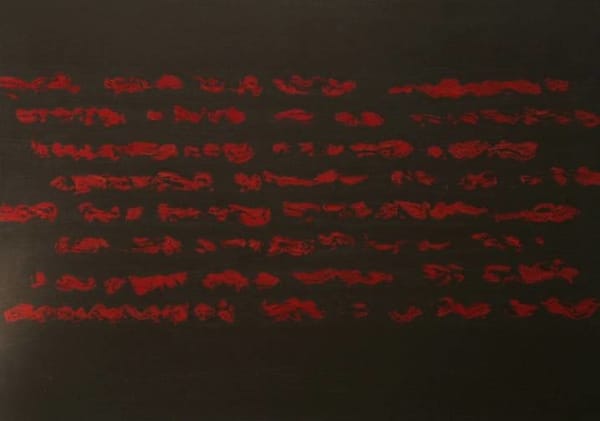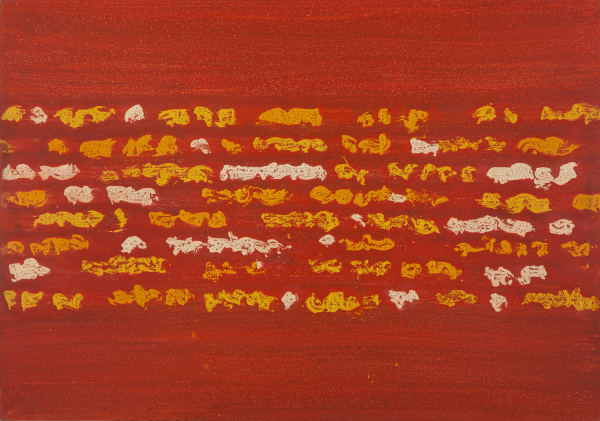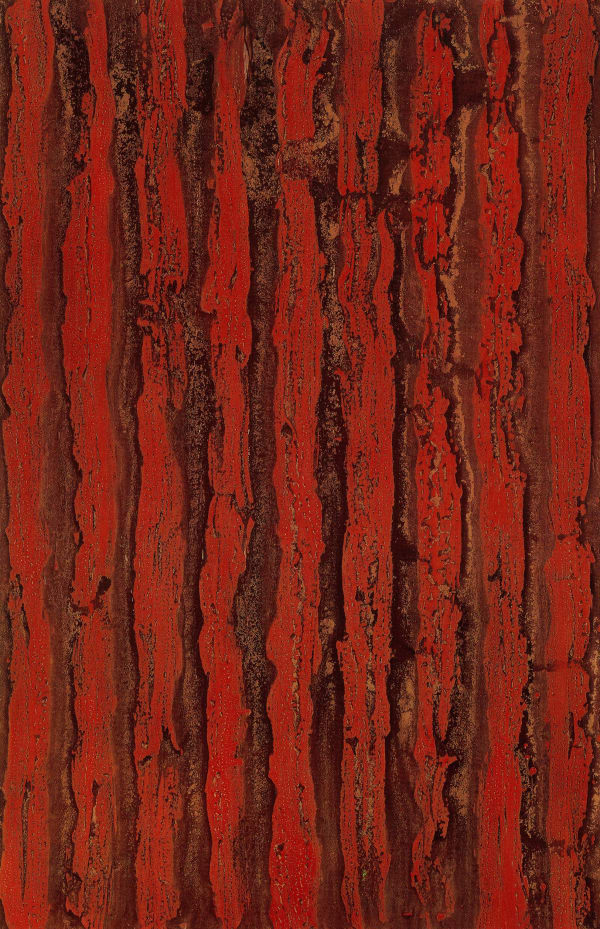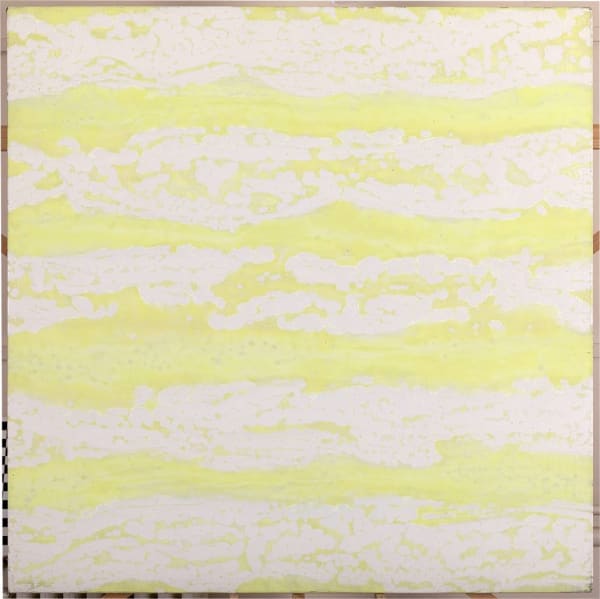-

Exhibition Judit Reigl, L’art de la fugue, peintures 1980–1982, Galerie de France, Paris, 1982
© All rights reserved / Archives Galerie de France, Paris
-
1976-83 | Series "The Art of the fugue"
1980-82 | Art of the fugue"It was thus, while I listened to Bach, that this new series was born, which I entitled L'art de la fugue [The art of the fugue]...Undulating writing in thick, glycerophtalic paint (a sort of Duco) on the front of the canvas that thinned out and became corpuscular as it passed through to the back. Oddly enough, this very thick paint was resistant to the acrylic that I painted over the entire canvas, set up this time horizontally on a horizontal frame. In this second phase, the acrylic was repelled by the thick paint, as water runs off a duck's back. It is a struggle in construction and destruction that gives the incredible result, when it reaches its final phase, of a painting visible from both the front and back...".
Judit Reigl - Interview with Jean-Paul Ameline for Art in America, April 2009 -
1983-84 | Series "Volutes, twists, columns, metal"
“In this series, Reigl makes two changes in the realisation of her works: on the one hand, she mixes metallic powders (silver, bronze, aluminium) into the paint, which multiplies the embellishment of the surface. On the other, she modifies the way the paintings are to be read once she has finished them by putting them in a vertical position. The painter’s lines, which can now be read from top to bottom of the canvas, can no longer be read as writing, seeming instead to recreate now some fantastic architecture of pillars rising up against the sky, or an overblown image of microscopic phenomena. According to Reigl, the truth of the universe depends on this unity, on the unending cycle of becoming, from the infinitely large to the infinitely small, from the living to the inanimate. It depends on the secret rhythm followed by this universe: an alternation of expansion and contraction, chaos and order, that the artist, almost without knowing it, transcribes into her works as she captures a “flow” that is beyond her, but to which she nevertheless belongs.”
Jean-Paul Ameline, «La lutte avec l’ange», in Exhibition catalog Judit Reigl, Peintre, Toulouse, Fondation pour l’Art Contemporain et Soissons, L’Arsenal, Éditions Pérégrines / Le Seuil, 2003 -
1983-85 | SERIES "HYDROGEN, PHOTON, NEUTRINOS"
« En 1983, 1984, avec Hydrogène, photon, neutrinos, cette pensée musicale se portera au cœur de la physique des particules et de la lumière: au cœur même de la matière - hydrogène, élément chimique (H), de numéro atomique 1, de masse atomique 1.0079.»Marcelin Pleynet, Judit Reigl, Paris, Éditions Adam Biro, 2001, p.100











